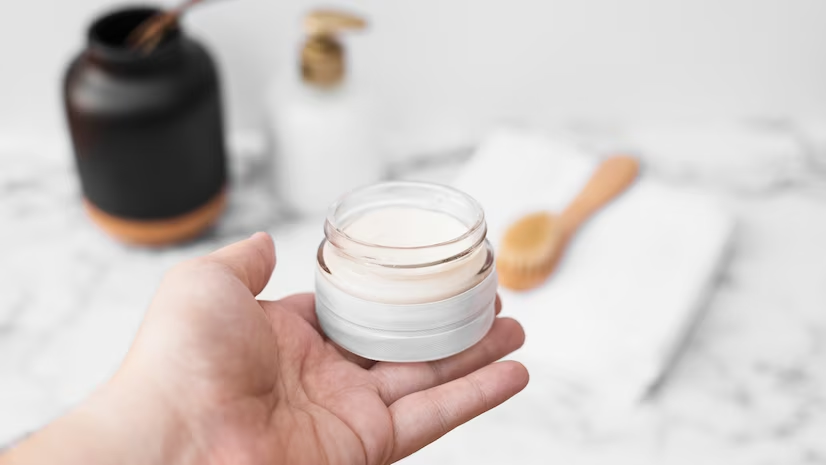
Aging is a natural process that we all experience, but many of us desire to maintain a youthful appearance and minimize the visible signs of aging. That's where tretinoin comes into play. As a renowned anti-aging ingredient, tretinoin has captured the attention of skincare enthusiasts and professionals alike. In this article, we will explore the science behind tretinoin's anti aging effects, its role in stimulating collagen production, reducing wrinkles, improving skin texture and tone, and fading age spots and hyperpigmentation.
So, if you're looking to turn back the clock on your skin and embrace a more youthful complexion, join us as we uncover the remarkable potential of tretinoin in the fight against aging.
What is Tretinoin?
Tretinoin is a vitamin A derivative from a class of medications called retinoids. It has gained significant recognition in dermatology for its wide range of therapeutic uses, including its remarkable anti-aging properties. Tretinoin is commonly used topically and is available as a prescription medication in various strengths.
Originally developed for acne treatment, tretinoin has proven highly effective in improving skin health and appearance. It works by binding to specific receptors in the skin, promoting cell turnover and increasing collagen production. Collagen is a vital protein that helps maintain the structure and elasticity of the skin, giving it a youthful and plump appearance.
Benefits of Tretinoin for Anti Aging
Tretinoin, also known as the gold standard in anti-aging skincare, offers a wide range of benefits when combating the signs of aging. Let's delve into the remarkable effects of tretinoin on the skin and its role in promoting a more youthful and rejuvenated appearance.

Increase in Collagen Production
Collagen is a protein that provides structural support to the skin, maintaining its firmness and elasticity. As we age, collagen production naturally decreases, leading to the development of wrinkles and fine lines. However, tretinoin helps to stimulate collagen synthesis in the skin. By promoting collagen production, tretinoin can minimize the appearance of fine lines and wrinkles, giving the skin a smoother and more youthful texture.
Reduction in Wrinkles and Fine Lines
Tretinoin promotes the renewal of skin cells through a process called cell turnover. This means that old and damaged skin cells are shed, and new cells are generated faster. As a result, wrinkles and fine lines are smoothed out, and the skin's overall texture is improved. With consistent use, tretinoin can gradually restore a more youthful appearance and minimize the signs of aging.
Improvement in Skin Texture and Tone
In addition to its impact on wrinkles, tretinoin for aging skin also improves texture and tone. Its exfoliating properties help to remove dead skin cells from the surface, revealing a smoother and brighter complexion. By encouraging the growth of new skin cells, tretinoin can also even out skin tone and fade away age spots, sun spots, and hyperpigmentation. This can result in a more even and youthful complexion.
Fade Age Spots and Hyperpigmentation
Age spots, also known as liver spots or sunspots, are darkened areas of the skin that commonly occur with age and sun exposure. Tretinoin inhibits the production of melanin, the pigment responsible for skin color, and helps to lighten dark spots and hyperpigmentation. With continued use, tretinoin for aging skin can significantly reduce the visibility of age spots, resulting in a more even and youthful complexion.
How to Use Tretinoin for Anti Aging

Using tretinoin for anti aging requires careful consideration and a proper skincare routine. Here are some key steps to effectively incorporate tretinoin into your regimen:
Consult with a Dermatologist
Before starting tretinoin cream for anti aging, consult with a dermatologist to assess your skin type, discuss your anti-aging goals, and determine the appropriate strength and formulation of tretinoin for your needs. A dermatologist can provide personalized guidance and instructions for optimal results.
Start with a Low Concentration
Tretinoin is available in various strengths. It is advisable to start with a low concentration, such as 0.025% or 0.05%, especially if you have sensitive skin or are new to tretinoin. This allows your skin to acclimate to the ingredient gradually and minimizes the risk of irritation.
Cleanse and Dry Your Skin
Before applying tretinoin cream for anti aging, ensure your face is clean and dry. Use a gentle cleanser suitable for your skin type and pat your skin dry with a clean towel. Moisture on the skin can increase the potential for irritation when using tretinoin.
Apply a Pea-Sized Amount
Take a pea-sized amount of tretinoin and apply it to your fingertips. Gently spread it across your face, avoiding the eye area, lips, and any areas of broken or irritated skin. Start with a small amount and gradually increase the quantity as tolerated.
Apply in the Evening
Tretinoin is typically applied in the evening as part of your skincare routine. This is because tretinoin can increase sensitivity to sunlight. Applying it before bedtime allows for better absorption and minimizes sun exposure.
Follow with Moisturizer
After applying tretinoin cream for anti aging, wait 20 to 30 minutes for it to absorb into the skin fully. Then, apply a moisturizer to help counteract potential dryness and irritation. Look for a moisturizer suitable for your skin type and choose one that is non-comedogenic (won't clog pores).
Use Sun Protection
As tretinoin increases the skin's sensitivity to the sun, applying a broad-spectrum sunscreen with at least SPF 30 every morning is crucial. Reapply sunscreen throughout the day as needed, especially if you spend prolonged periods outdoors.
Be Consistent and Patient
Results with tretinoin for anti aging are typically seen over time with consistent use. It may take several weeks or even months to notice significant improvements in your skin. Be patient and continue using tretinoin as directed by your dermatologist.
Monitor and Adjust
Pay attention to your skin's response to tretinoin. If you experience excessive dryness, redness, or irritation, reduce the frequency of application or use a milder formulation. It is essential to communicate any concerns or side effects to your dermatologist.
Choosing the Right Strength of Tretinoin for Anti Aging
When using tretinoin for anti aging, selecting the appropriate strength of the cream is crucial. Tretinoin creams are available in various concentrations, and the right strength depends on factors such as your skin type, tolerance, and the severity of your anti-aging concerns.
Many anti-aging studies have shown that low to moderate-strength tretinoin creams often yield the best results. These concentrations typically range from 0.025% to 0.05% tretinoin.
A study published in the journal Archives of Dermatology compared the effects of a tretinoin cream for anti aging with a concentration of 0.05% and another cream with a lower strength of 0.01% tretinoin.
At the end of the 24-week study period, a significant percentage of individuals (79%) who utilized the 0.05% tretinoin cream demonstrated noticeable improvements in various factors, including fine wrinkling, rough skin, and hyperpigmentation (dark spots), in contrast to a smaller proportion of individuals who used the lower-strength tretinoin cream for anti aging. Therefore, lower-strength tretinoin creams typically have a lower likelihood of causing side effects.
When Should You Expect Results From Tretinoin?
Similar to other medications, tretinoin requires a sufficient amount of time to take effect on the skin. On average, it can take anywhere from eight to 24 weeks of consistent treatment with tretinoin to observe noticeable improvements in the appearance of wrinkles and other signs of aging. The exact timeframe may vary depending on individual factors such as skin condition, formulation strength, and frequency of use.
Considerations and Precautions When Using Tretinoin for Anti Aging

While tretinoin offers significant benefits for anti-aging, it is important to be aware of certain considerations and precautions when using this potent ingredient. Here are some key points to keep in mind:
Consultation with a Dermatologist
Before incorporating tretinoin into your skincare routine, it is crucial to consult with a dermatologist. They can assess your skin type, discuss your concerns, and recommend the appropriate strength and formulation of tretinoin. Dermatologists can also guide how to incorporate tretinoin for aging skin into your routine and advise on potential side effects.
Gradual Introduction
Tretinoin for anti aging can cause skin irritation, especially during the initial stages of use. It is essential to introduce tretinoin gradually to allow your skin to adjust. Start with a lower concentration and apply it every few days, gradually increasing the frequency as tolerated. This approach helps minimize the risk of excessive dryness, redness, and peeling.
Potential Side Effects
Some common side effects of tretinoin for anti aging include flaking, redness, peeling, and mild irritation. These effects are usually temporary and can be managed by adjusting the frequency and concentration of tretinoin application. However, if you experience severe or persistent side effects, it is important to consult your dermatologist.
Contraindications
Tretinoin may only be suitable for some. It is not recommended for pregnant women or those planning to become pregnant, as it can potentially harm the unborn child. Individuals with sensitive skin, eczema, or rosacea may need to exercise caution when using tretinoin, as it can exacerbate these conditions. Additionally, certain medications or skincare products may interact with tretinoin, so you must inform your dermatologist about any other products or medications you use.
Long-Term Use
Tretinoin's anti-aging effects are typically seen over the long term with consistent use. Maintaining a regular skincare routine and continuing using tretinoin as directed by your dermatologist to experience the full benefits is important. Results may vary for each individual, so patience and persistence are key.
Conclusion
Incorporating tretinoin into your skincare routine can be a game-changer in achieving a more youthful and radiant complexion. Its ability to stimulate collagen production, reduce wrinkles, improve skin texture and tone, and fade age spots makes it an invaluable tool in combating the signs of aging.


